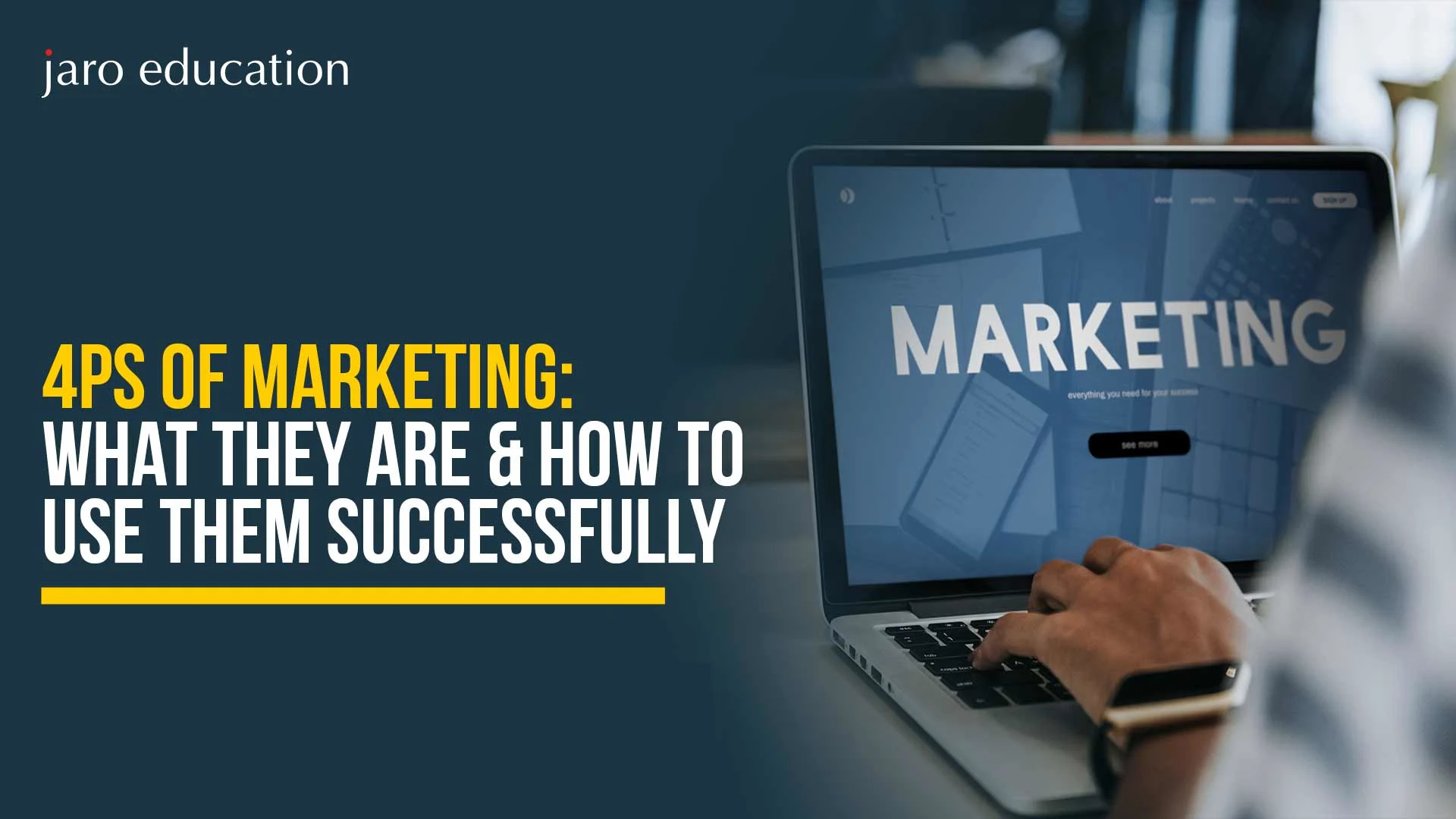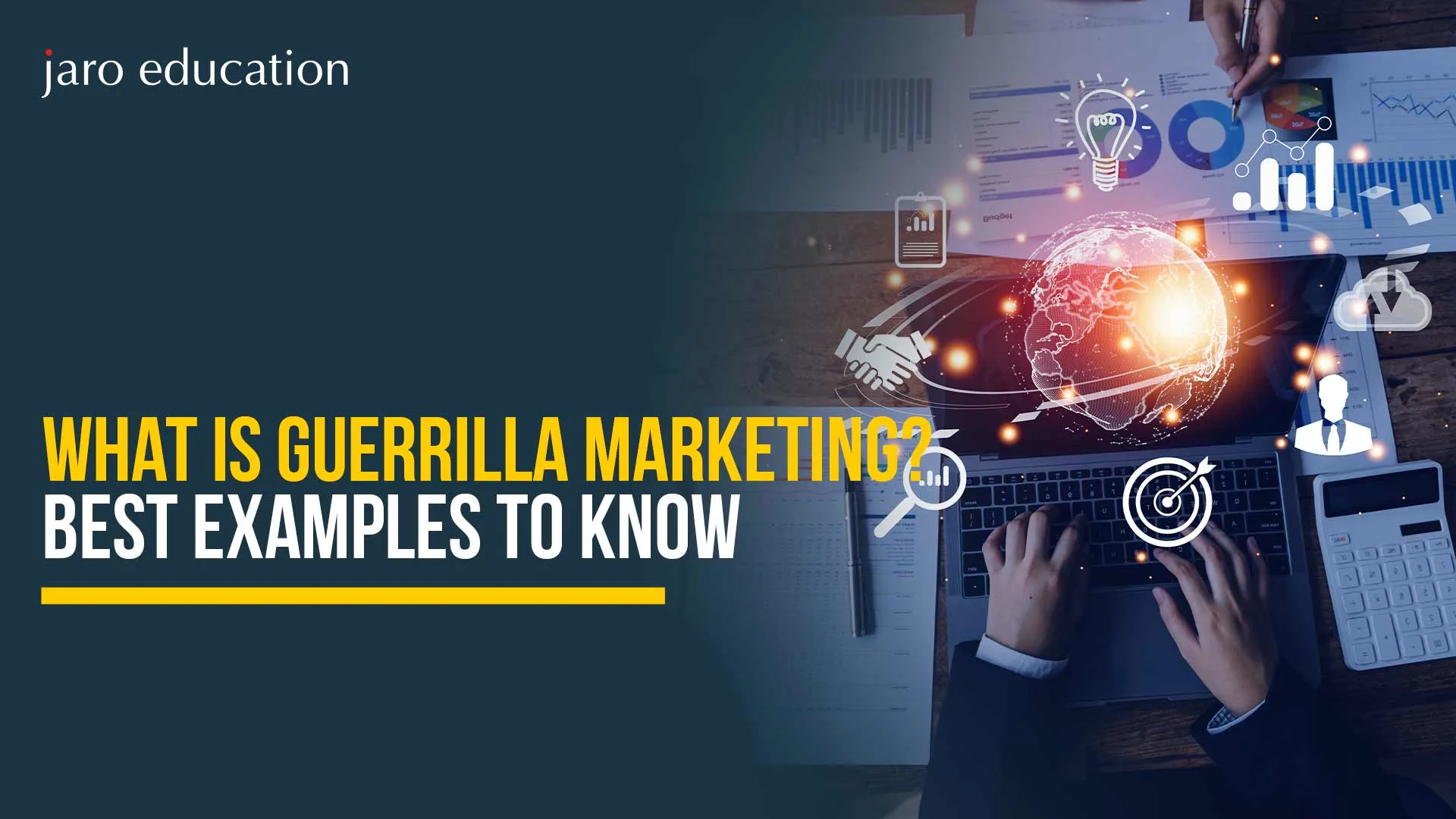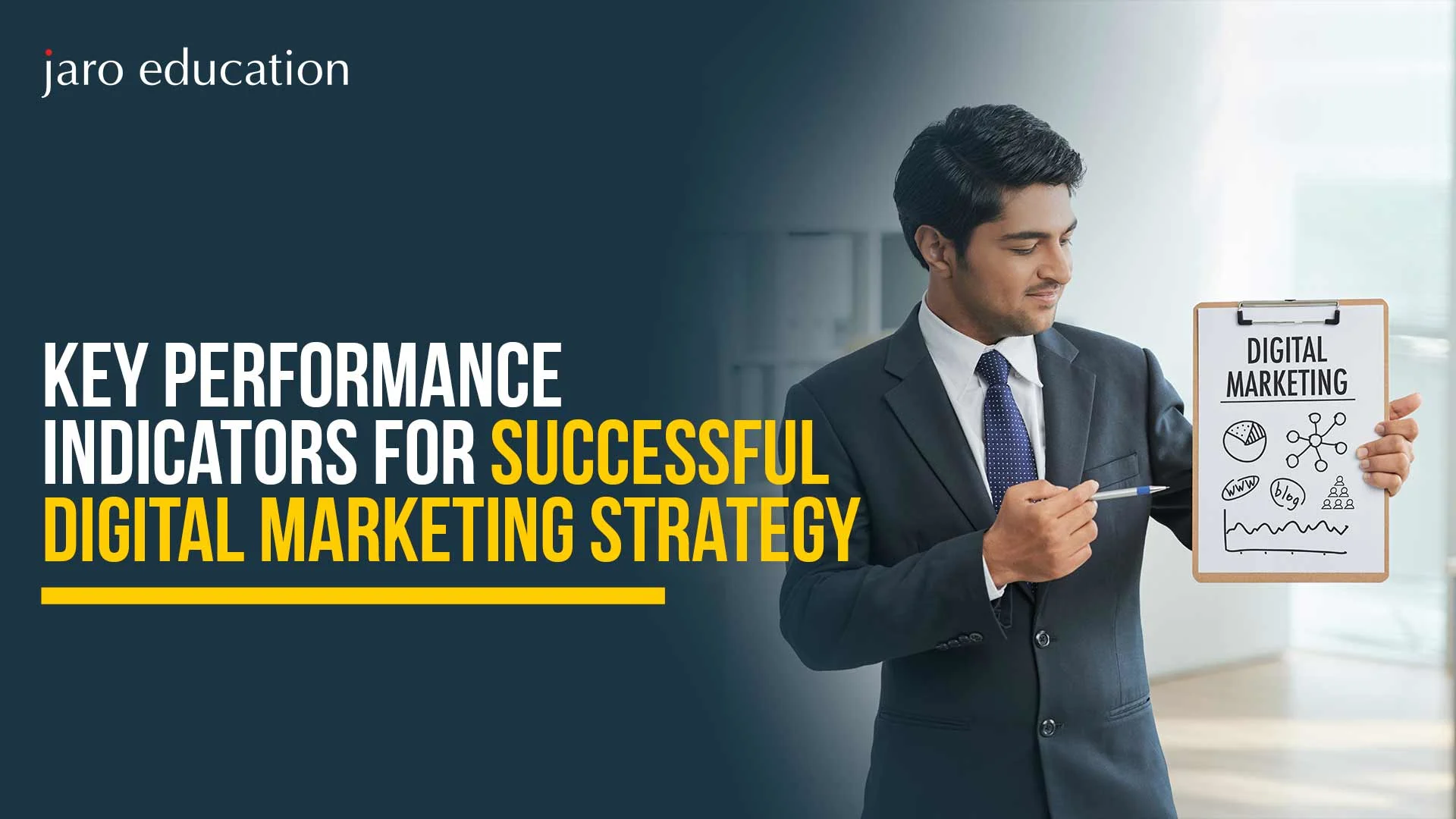PPC in Digital Marketing: A Comprehensive Guide
Table of Contents
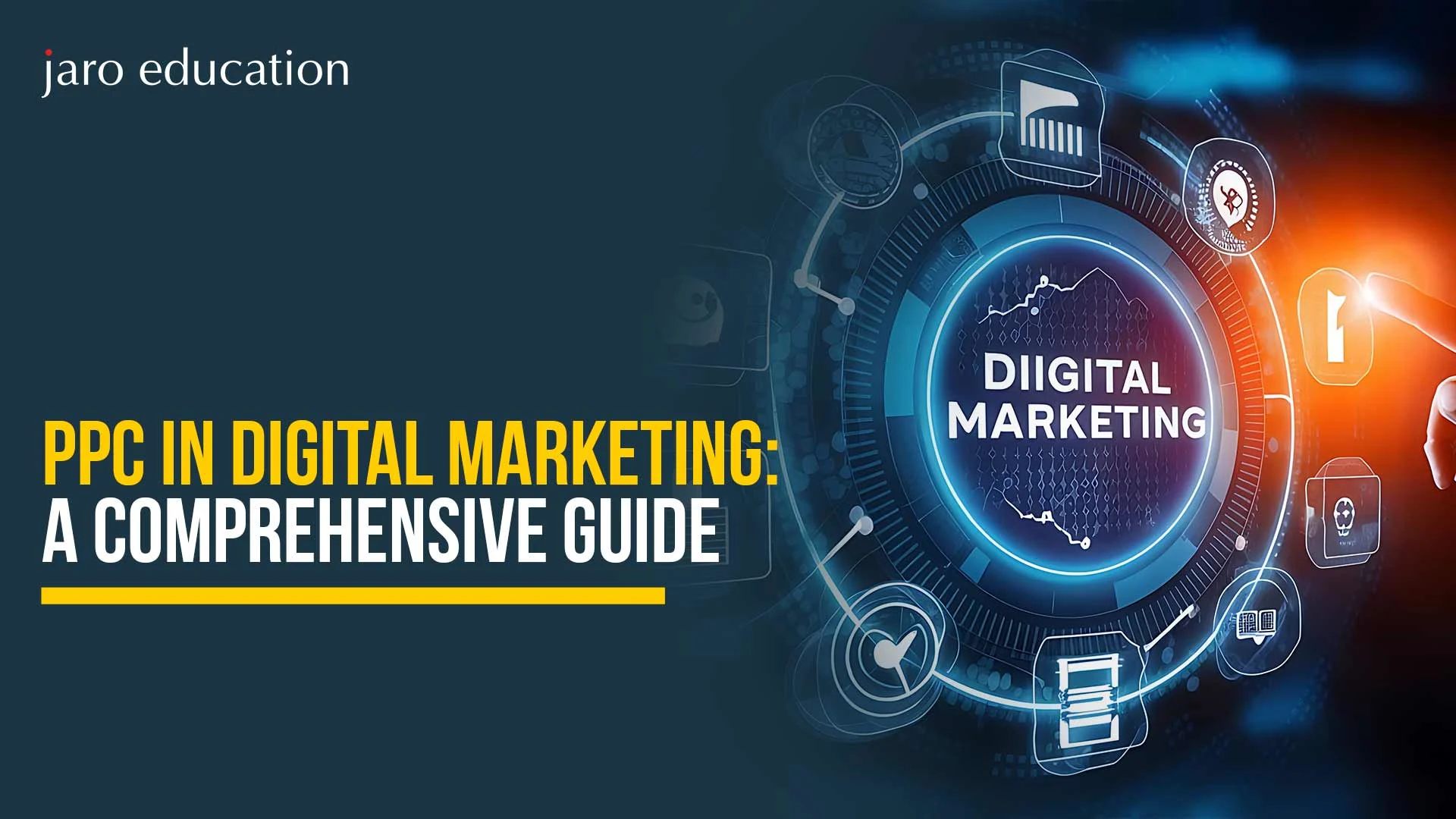
- jaro Education
- 7, August 2023
- 2:00 am
What is PPC?
Imagine reaching your ideal customer at the moment they search for your product or service. That’s the power of Pay-Per-Click (PPC) advertising in digital marketing. Instead of waiting months for organic results, PPC places your brand at the top of search engines and social platforms right away. It drives targeted traffic, gives qualified leads, and provides measurable results. With businesses competing fiercely for online attention, PPC in digital marketing has become a game changer. It offers unmatched control over budget, audience, and campaign performance. Whether you want to boost sales, increase brand awareness, or outpace competitors, PPC is the shortcut to visibility and growth in today’s digital world.
Benefits of Pay-Per-Click Advertising
PPC, or Pay Per Click advertising, offers numerous benefits for businesses, including:
Cost-effectiveness
Optimised PPC campaigns can be cost-effective because you only pay when someone clicks on your ad, ensuring you spend your budget on engagement.
Increased visibility
When customers search for relevant terms, your advertising may appear on the first page of search results if you employ PPC, providing your brand with more exposure and visibility.
Targeted traffic
PPC in digital marketing allows you to target certain keywords and demographics, making sure that traffic sent to your website is more inclined to be intrigued by your products or services, boosting the possibility of conversions.
Multiple ad campaigns
With PPC, you can run multiple ad campaigns for different keywords, tailoring your messaging and reaching a broader audience.
Higher click-through rates (CTR) and conversions
Well-optimised PPC in digital marketing campaigns tend to have higher click-through rates designed to attract relevant users. This leads to increased conversions and ultimately boosts your sales revenue.
- Instant traffic
Unlike organic search efforts, PPC provides immediate results. PPC produces results right away, unlike organic search initiatives. Once your campaigns are set up, your advertising can immediately direct traffic to your website.
Achieving success with PPC requires careful planning and execution. Further, it involves selecting keywords, organising them into well-structured campaigns and ad groups, and creating optimised landing pages to improve conversion rates. By developing highly relevant and targeted PPC in digital marketing campaigns, search engines may reward you with lower-cost ad clicks. Google, for example, may lower your cost per click if your ads provide value and relevance to users, ultimately leading to a higher return on ad spend and increased profitability.
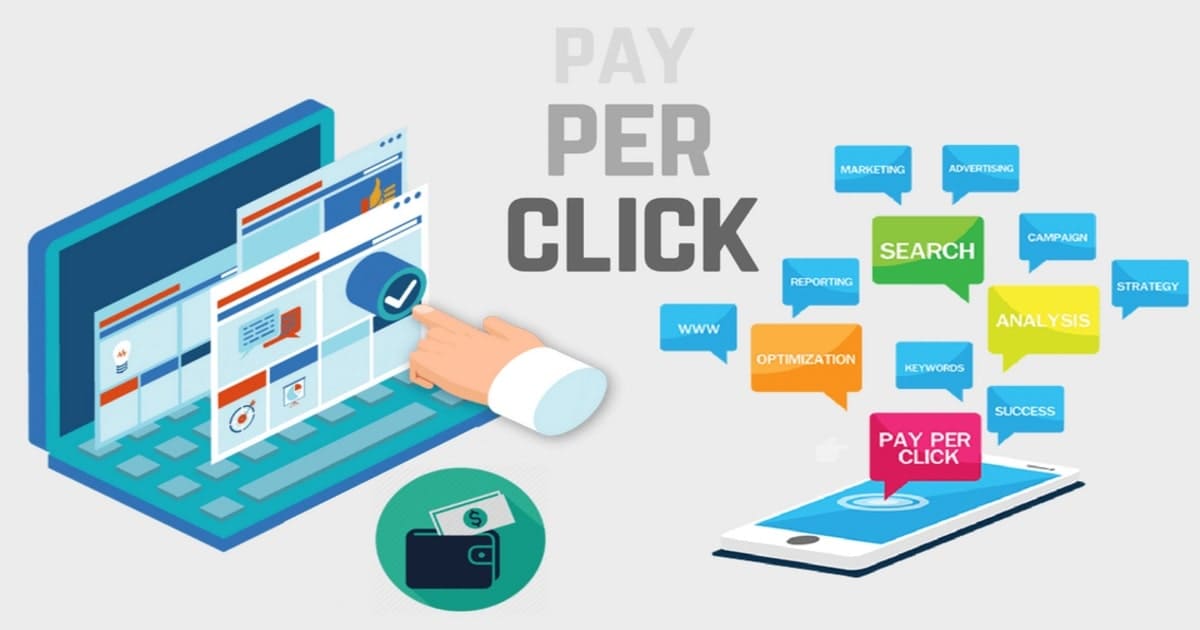
*Crystal Hues
Who needs to utilise PPC in Digital Marketing?
Pay Per Click advertising is perfect for small companies since they control how much they are ready to pay for every keyword, allowing them to budget for their advertisements. In simple terms, this makes certain that the funds you spend on advertising aren’t wasted by increasing the probability that you’ll bring in more customers who have an interest in your goods.
Guide to Conducting Effective PPC Keyword Research
Effective PPC keyword research is crucial for building successful campaigns. While it can be time-consuming, it’s an essential step to ensure you’re targeting the right keywords. Here’s a brief guide on conducting effective PPC keyword research:
Relevance
Choose keywords that closely relate to your products or services. This ensures that the clicks you pay for are more likely to convert into practical actions on your website.
Exhaustiveness
Avoid limiting your research to just the most well-known keywords in your sector. Employ long keywords that are more specific and less popular but can still generate significant traffic. They often provide better value and are less competitive.
Expansion
Treat PPC keyword research as an ongoing process. Continuously refine and expand your campaigns by identifying new keywords and removing underperforming ones. This helps keep your campaigns fresh and adaptable to changing market trends.
Remember, keyword research is not a one-time task. Regularly monitor your campaigns and adjust based on performance data and industry trends to optimise your PPC in digital marketing efforts.
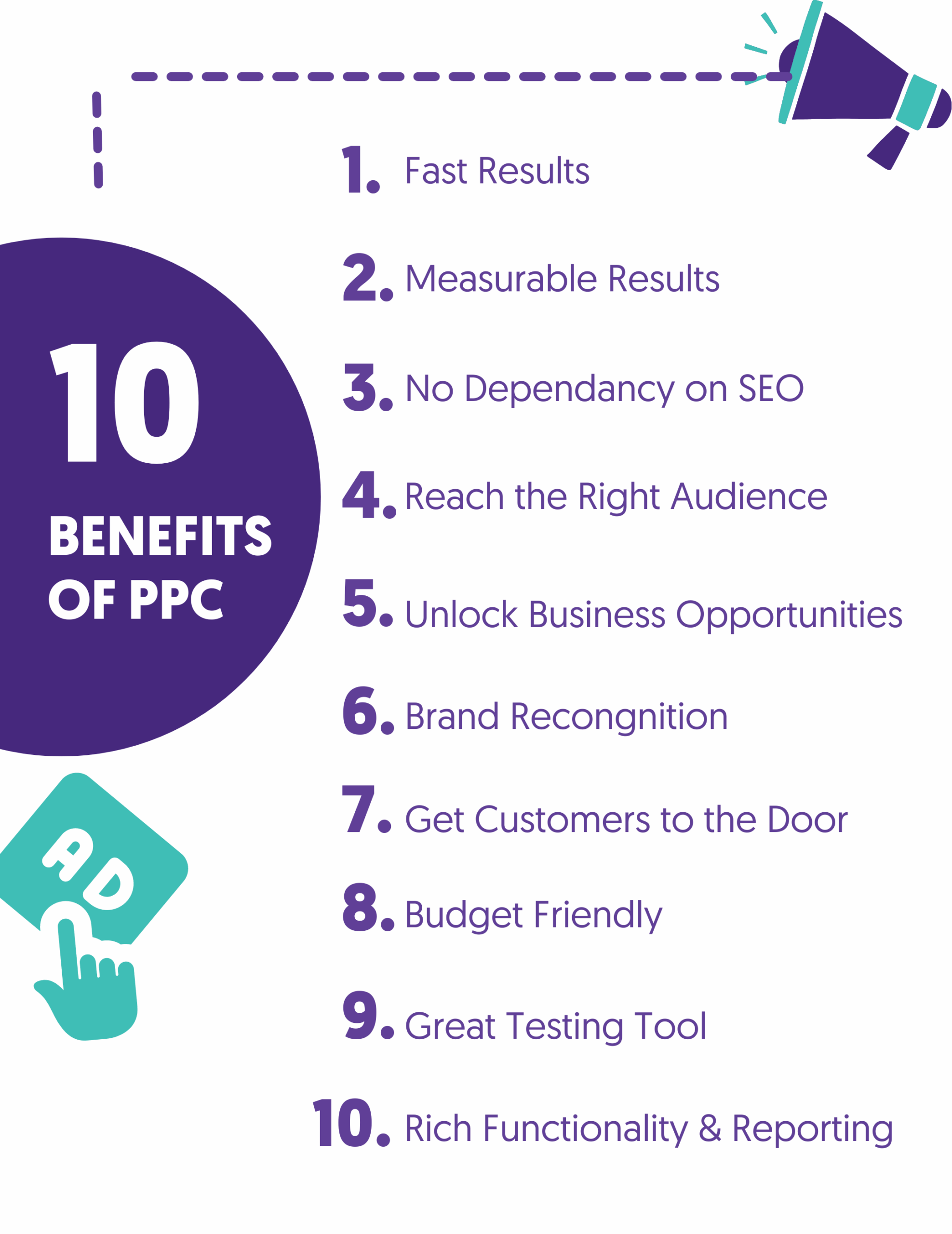
*searchtraffic
Best Tools for PPC in Digital Marketing
When it comes to using PPC in digital marketing, having the right tools can greatly improve campaign optimization and boost ROI.
These tools give important insights into ad performance, audience behavior, and budget allocation, helping campaigns connect with the right people at the right time. By using effective PPC marketing tools, businesses can simplify their strategies, cut unnecessary spending, and achieve better results in a highly competitive online environment.
- Google Ads – The most popular platform for PPC in digital marketing, offers keyword targeting, ad extensions, and detailed performance tracking.
- SEMrush – A useful tool for pay-per-click advertising that includes features for competitor analysis, keyword research, and campaign optimization.
- SpyFu – Helps find competitor keywords and ad strategies to improve your own PPC campaigns and reduce wasted spending.
- Optmyzr – A PPC automation tool that assists with bid management, reporting, and account optimization for better ROI.
- Microsoft Ads (Bing Ads) – helps expand reach beyond Google, offering lower competition and more cost-effective campaigns.
- WordStream – Provides campaign management, reporting, and optimization features designed for small and medium businesses.
- Ahrefs – Though best known for SEO, offers strong keyword insights to enhance PPC in digital marketing strategies.
Best Practices for Managing Your PPC Campaigns
Managing your PPC in digital marketing campaigns effectively is crucial for ongoing success. By regularly monitoring and optimising your account, you can ensure that your campaigns continue to perform at their best. Here are some key practices to consider:
Continuously add relevant PPC Keywords:
Expand the reach of your campaigns by regularly identifying and adding new keywords that are relevant to your business. This helps you capture additional traffic and potential customers.
Utilise negative keywords:
Improve campaign relevancy and reduce wasted spend by adding non-converting terms as negative keywords. This prevents your ads from showing to irrelevant audiences, focusing your budget on more valuable clicks.
Review and optimise costly keywords:
Regularly assess the performance of your keywords and identify any expensive, underperforming ones. If necessary, pause or remove these keywords to allocate your budget more effectively.
Refine landing pages:
Align your landing page content and calls-to-action with the specific search queries of your audience. By customising landing pages based on user intent, you can improve conversion rates and provide a more tailored user experience.
Split ad groups:
Enhance click-through rates (CTR) and quality scores by dividing larger ad groups into smaller, more focused ones. This allows you to create highly targeted ad text and landing pages, resulting in improved campaign performance.
Implementing these practices and regularly monitoring your PPC in digital marketing campaigns will help you optimise performance, increase conversions, and maximise the return on your advertising investment.
Leading PPC Advertising Networks
Google Ads: Maximising Your PPC Campaign Success
The most widely utilised PPC ad network is Google Ads. You may design campaigns using the platform that will promote all the services offered by Google. It’s vital to select the appropriate ad style and keywords because Google Ads ranks prospective advertisers according to the quality, significance, and scope of their ads, along with the amount they offer.
Google Shopping: Maximising Product Visibility and ROI
Google Shopping is a powerful PPC channel that allows retailers to showcase their products to interested shoppers. Integrated with Google Ads, Google Shopping offers significant advantages for businesses aiming to increase visibility and drive website traffic. Here’s how the platform is advantageous for gaining reach and leading to conversion.
Amplified visibility and impressions
With Google displaying your products as part of the Search Engine Results Page through Google Shopping significantly boosts visibility and impressions. This exposure can attract more potential customers to your website or page.
Competitive bidding for prime placement
In Google Shopping, advertisers compete by placing bids to secure favourable positions on the Shopping carousel. This preference may stem from believing that the top ad represents a high-quality retailer or offers the best price.
Managing Google Shopping effectively
Successfully managing Google Shopping can be a complex task. Retailers have various options, including different automation techniques, manual management, or enlisting the assistance of third-party agencies. Each approach has its merits and can contribute to maximising profitability on the channel.
Retailers may improve their product visibility, draw in niche audiences, and boost the total return on investment (ROI) for their PPC in digital marketing ads by utilising the possibilities of Google Shopping. To make the most of this dynamic advertising platform, it is crucial to keep up with the most recent tactics and methods.
YouTube Ads
YouTube advertisements are a popular form of internet advertising that lets people and companies advertise their goods or services on the YouTube platform. These advertisements come in various formats, including skippable video ads, non-skippable ads, and bumper ads. Sponsored cards have information within the video, and overlay advertising is displayed at the bottom. Ads are purchased on a cost-per-view (CPV) or cost-per-click (CPC) basis, allowing advertisers to target particular audiences based on demographics, interests, and behaviours.
Microsoft Ads
The Microsoft Bing search engine and the Microsoft Advertising Network, which is a group of apps and websites that collaborate with Microsoft to display ads, are two platforms where individuals and companies can create and run advertisements. These are the two places where individuals and companies can create and run advertisements.
A variety of ads, including search advertisements, product commercials, shopping advertisements, display ads, and video advertisements, can be made using this platform. These advertisements, which can be bought on a pay-click basis, are targeted at certain audiences based on interests, demographics, and behaviours.
Essential PPC Terms and Definitions
To navigate the world of PPC advertising, it’s important to familiarise yourself with key terms and definitions. Here are the main elements of a PPC in digital marketing campaign, from broader concepts to more specific terms:
1. Search Engine Marketing (SEM)
SEM includes all forms of digital marketing conducted on search engines such as Google, Yahoo, or Bing. It includes both paid advertising (PPC) and organic strategies like search engine optimization (SEO).
2. Cost-per-click (CPC)
The cost per click, or CPC, is the amount that an advertiser pays for each time their ad is clicked. It serves as the bid in an auction that determines ad placement. Higher bids typically result in better ad positioning. Advertisers set their maximum CPC, while the actual CPC is calculated based on factors like the competitor’s ad rank and the advertiser’s quality score.
3. Ad Rank
The position of an advertisement on a search engine results page is determined by Ad Rank. It is derived by dividing the highest bid by the ad’s quality score.
4. Quality Score
Quality Score is a rating assigned by search engines based on various factors such as the ad’s click-through rate (CTR) compared to the average CTR for ads in that position, keyword relevance, landing page quality, and historical performance on the search engine results page (SERP). A higher quality score may result in more advantageous ad placement and lower prices.
Understanding these terms is crucial for effectively managing and optimising PPC campaigns. By applying SEM, monitoring CPC, improving ad rank, and aiming for a high-quality score, advertisers can enhance their campaign performance and achieve their marketing goals.
Boost Your Digital Marketing Skills with Jaro Education
To be successful in the ever-changing digital industry, it is vital to enroll in a programme like PG Certificate in Digital Marketing and Growth by IIM Visakhapatnam. This 12-month program is designed to assist in dealing with the challenges associated with digital marketing and helps advance your career. Jaro Education gives you a chance to sign up for this thorough program, which will help you attain useful skills through live, rigorous learning led by business professionals. Apply now to prosper your career in the world of digital marketing.
Conclusion
PPC is critical in providing outstanding client experiences while minimising costs. Businesses can obtain an advantage over their competitors by utilising PPC techniques and streamlining the consumer journey. The precise abilities you have, the amount of experience you have gained in those skills, and your capacity to continually create growth for the firm all have a significant impact on your earning potential in the field of digital marketing, specifically PPC. Success on a personal and organisational level in this dynamic area depends on ongoing education and being current on PPC in digital marketing trends.
Frequently Asked Questions
PPC in the digital marketing model is where advertisers pay only when someone clicks their ad. It’s a cost-effective way to drive traffic quickly.
A Google search ad is a common example of PPC. For instance, when you search “buy shoes online,” the top sponsored results are PPC ads.
The PPC full form is pay-per-click. It’s widely used in digital marketing to generate leads and boost visibility.
PPC is the advertising model, while Google Ads is a platform where you run PPC campaigns. In short, Google Ads is one type of PPC channel.
Google Ads is the most widely used PPC platform. It dominates the search engine market and reaches millions of users daily.





